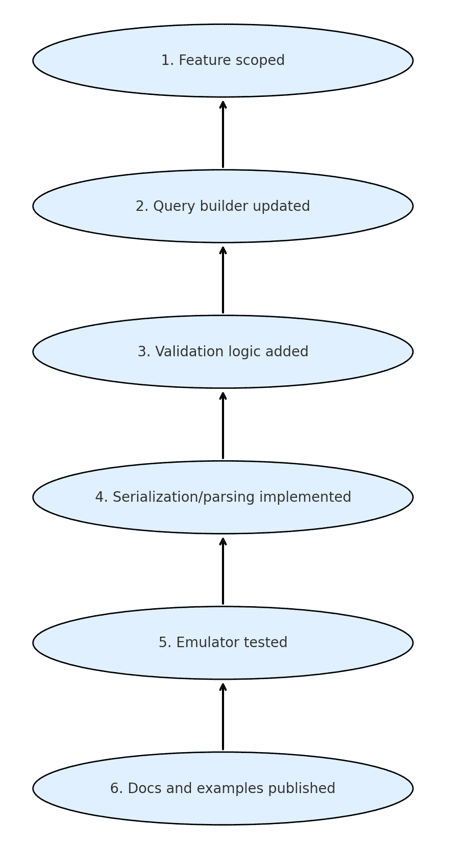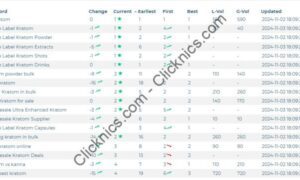Image: Software engineer working on code | Tirachard Kumtanom via Shutterstock
Every interaction between an application and its cloud database passes through a control point: the SDK. Far from being a passive transport layer, the SDK actively shapes performance outcomes and developer experience. It determines how fast data moves across the wire, how errors are surfaced and retried, and how intuitively developers can build reliable features.
When the SDK performs well, the system feels fast, predictable, and ergonomic. When it doesn’t, developers face latency, friction, and brittle behaviors that slow teams down. A great SDK supports not only the system’s runtime efficiency but also the team’s ability to build, debug, and ship confidently. It’s not just infrastructure. It’s interface, guardrail, and runtime all at once.
Where SDK Performance Breaks Down
An SDK is not just a convenience layer. It is a control point that directly affects how efficiently a system runs and how productively developers can work. When the SDK is fast and predictable, developers ship confidently and systems stay responsive. When it is slow or confusing, it blocks both performance and progress.
Many SDK issues begin on the client side. Backend services may scale as expected, but the SDK can still introduce delays. Common problems include repeated connections, excessive retries, and inefficient data serialization. These may not appear during testing but often surface under real traffic.
The impact is twofold:
- Performance degrades as latency increases and resource usage climbs.
- Developer productivity slows as engineers lose time debugging SDK behavior.
The most frequent bottlenecks include:
- Connection handling without pooling.
- Heavy serialization that adds memory and CPU cost.
- Retry logic that lacks backoff or safeguards.
- Queued requests that overwhelm the client before reaching the server.
SDKs sit at the intersection of runtime behavior and developer control. Treating them as a critical system component, rather than an afterthought, helps teams prevent hidden bottlenecks and build more reliable, maintainable applications.
Building for Efficiency
Improving SDK performance is not about shortcuts. It comes from focused, measurable changes that hold up under real usage. Teams that prioritize reliability testing under realistic conditions and use observation, not assumptions, to guide decisions.
Eliminate Avoidable Latency
One common source of latency is the expiration of access tokens. When an SDK waits until a request fails before refreshing the token, it adds unnecessary delay.
- Fix: Refresh the token shortly before expiration.
- Result: Avoids performance dips, especially for workloads with long-running or concurrent operations.
Remove Unused Output
Some improvements come from removing what is not needed. In one case, suppressing unused HTTP trailer data reduced overhead.
- Fix: Strip out unnecessary trailer fields.
- Result: Lower memory usage and reduced bandwidth without affecting the core architecture.
Tune Retry Behavior
Retry logic is critical for resilience, but often causes more harm than good when misconfigured.
- Fix: Use exponential backoff with jitter instead of fixed retry intervals.
- Result: Reduces network congestion and avoids coordinated retry spikes during outages.
Optimize Connection Handling
Opening a new connection for each request wastes time and resources, especially under high traffic. Without proper pooling, response times increase and server load climbs.
- Fix: Implement connection pooling with configurable idle timeouts and maximum pool size.
- Result: Reduces connection churn, improves reuse, and smooths out throughput during spikes in traffic.
Each of these changes can seem minor on its own. But in a high-throughput system, small inefficiencies add up quickly. A few targeted optimizations often unlock better latency, lower error rates, and a smoother experience for developers and end users alike.

Image: Performance Optimizations in Practice: Before vs After
Developer Experience Cannot Be an Afterthought
An SDK may be fast, but if it confuses or frustrates users, it will not gain traction. Developer experience matters. It affects how quickly people adopt a tool and how effectively they use it.
Strong SDKs support developers through clarity, not complexity. This shows up in several key areas:
- Predictable and intuitive APIs. Function names should be clear and consistent. Developers should not have to guess or memorize hidden behaviors.
- Clear error messages. When something fails, the SDK should explain what happened and suggest how to fix it. Vague or overly technical messages slow down debugging and create friction.
- Practical documentation. Good docs walk through real use cases, highlight common edge cases, and avoid unnecessary jargon. They answer questions before developers have to ask them.
- Built-in best practices and guidance. A well-designed SDK helps developers avoid costly mistakes. It includes safe defaults for things like retries, timeouts, and token refresh. It may warn when settings are risky or when usage patterns might break in production. Guardrails such as usage hints, auto-cleanup routines, and sensible configuration defaults reduce the chance of fragile or inefficient implementations.
When SDKs get these fundamentals right, developers build faster and with more confidence. The tool becomes an asset, not an obstacle.
Features That Make a Difference
The right features in an SDK do more than check a box. They eliminate complexity, reduce duplication, and unlock cleaner, more maintainable code.
Shifting Work from the Client to the SDK
Performance and usability are not enough on their own. The SDK also needs to evolve to meet the changing needs of developers. The most valuable features are those that eliminate unnecessary work from the application layer.
Take OR queries and aggregation functions, such as SUM or AVG. Without these, developers must write additional queries or manually loop through data. By shifting this logic into the SDK, teams save effort and reduce complexity.
Delivering Features with Real Engineering Depth
Delivering these features goes far beyond enabling a flag on the backend. It involves updates to query builders, validators, response parsing, tests, and documentation. Developers also expect that syntax feels natural in each programming language. An OR query in one language should not look like an awkward translation from another.

Image: Feature Delivery Pipeline for SDKs
Expanding the SDK’s Expressiveness
When this work is done carefully, the SDK becomes more expressive. It does more of the heavy lifting, allowing the developer to write less code to accomplish more.
These improvements raise the ceiling on what developers can achieve, while reducing the effort required to get there.
Measuring the Right Signals
Improving an SDK starts with visibility. Metrics reveal where things break under load or behave unpredictably. Retry counts, latency spikes, queue depth, and connection reuse rates help teams track performance over time. These numbers make it easier to test changes, catch regressions early, and confirm that improvements actually work.
But numbers do not tell the full story. Developer feedback fills the gaps that charts miss. Support tickets, forum posts, and GitHub issues often expose unclear APIs, missing documentation, or frustrating workflows. These insights point to real pain points that might not show up in telemetry.
Strong SDK teams pay attention to both. They monitor real usage and listen when developers report friction. This combined input helps teams improve the product in ways that actually matter.
The Path to Engineering Excellence
A great SDK does not demand attention. It blends into the background, allowing developers to stay focused on building. It avoids surprises, respects time, and reduces bugs by guiding better usage.
Reaching that point requires more than polishing code. It means tuning performance under pressure. It means shaping the API around real-world workflows. It means fixing retry logic and rewriting error messages. Every detail matters.
Teams that prioritize both speed and usability tend to build products that last. Developers trust them. Teams deploy faster. Fewer problems reach production. That is how engineering excellence shows up.
Not just in benchmarks. Not just in satisfaction surveys. But in the confidence developers feel every time they use the SDK.
About the Author
Baha Aiman is a software engineer focused on building performant and developer-friendly SDKs for cloud databases. Her recent work includes designing client-side metrics systems, improving data serialization efficiency, and delivering high-impact features such as OR queries and aggregations in production-grade client libraries. She specializes in Go and has contributed to the performance and usability of multiple cloud-native tools used across enterprise workloads.
References:
- Gontovnikas, M. (December 23, 2020). What is an SDK? Auth0 by Okta. https://auth0.com/blog/what-is-an-sdk/
- Red Hat. (June 10, 2020). What is an SDK? Red Hat. https://www.redhat.com/en/topics/cloud-native-apps/what-is-SDK
- Wickramasinghe, S. (February 18, 2022). SDK vs API: What’s the Difference? BMC Blogs. https://www.bmc.com/blogs/sdk-vs-api/
- Yasar, K. (October 18, 2022). Software Developers Kit (SDK). TechTarget. https://www.techtarget.com/whatis/definition/software-developers-kit-SDK



































